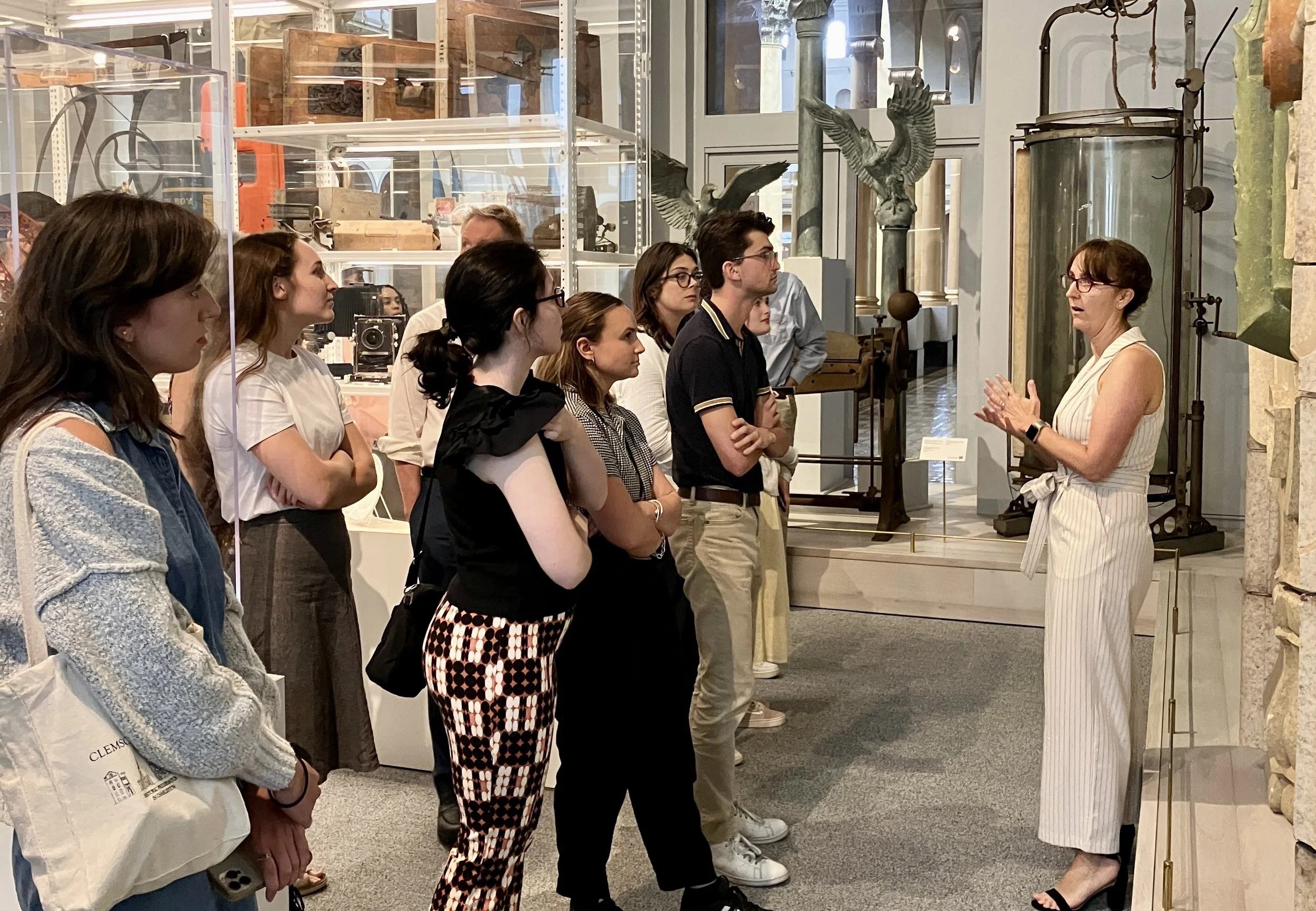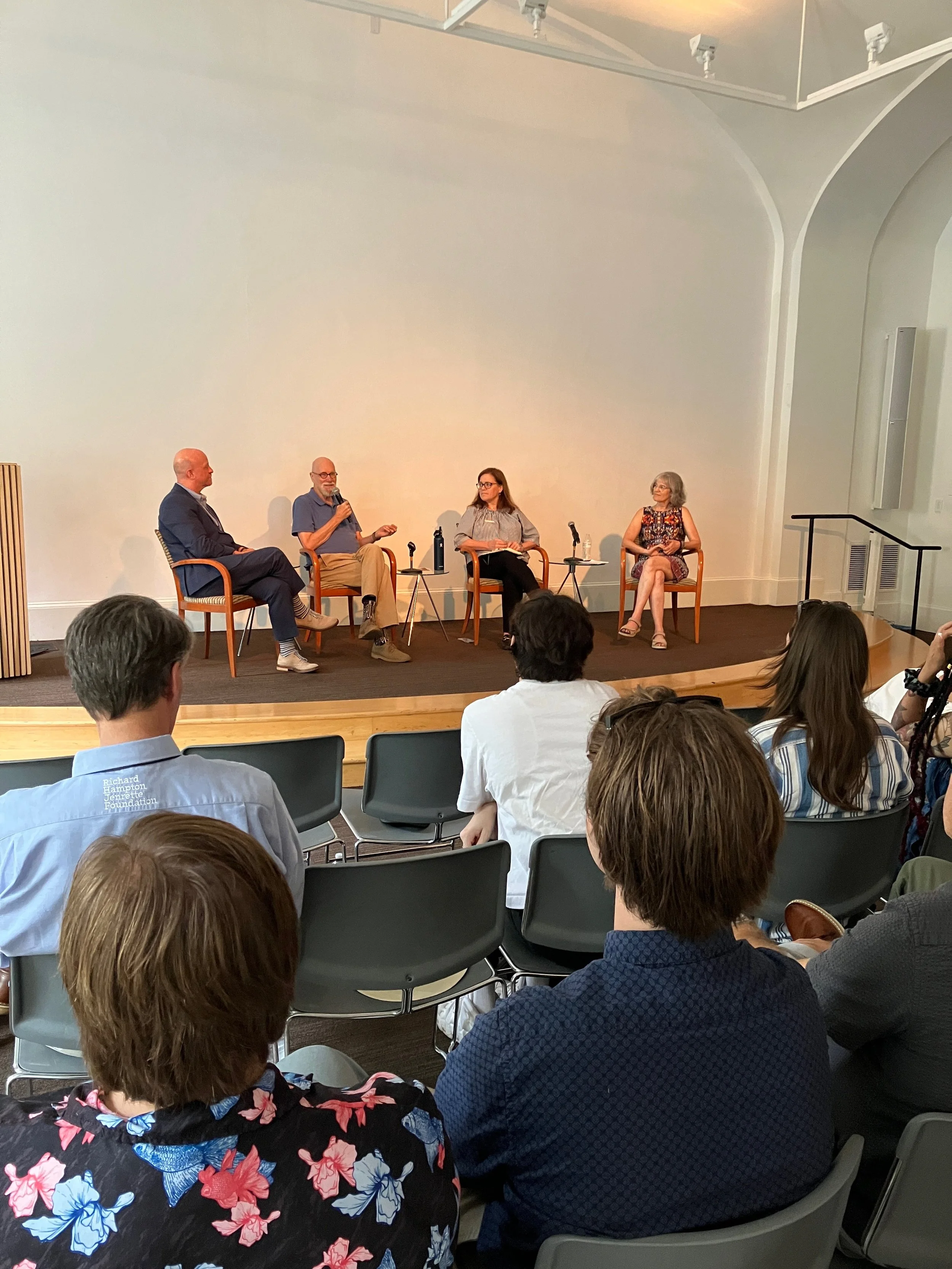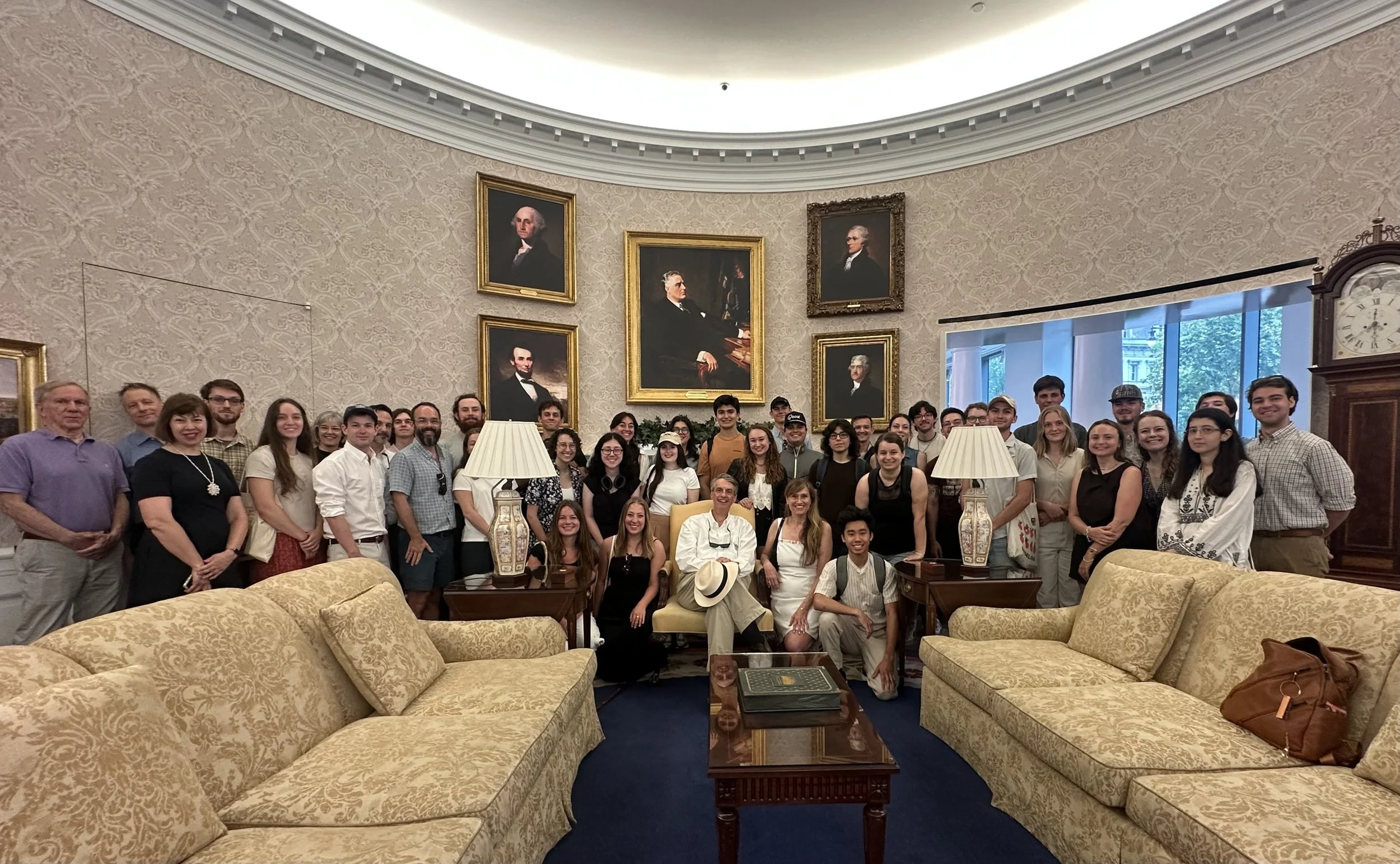Preservation in Motion: The Jenrette Foundation’s 2025 Student Day in Washington, D.C.
Author: William Richards, Ph.D.
With over a dozen institutions represented and conversations continuing beyond the panels, the day signaled growing consensus: the future of preservation lies not in looking back, but in reimagining how—and why—we preserve at all.
Forty students from across the country gathered at the National Building Museum to begin an immersive, two-day exploration of historic preservation in action, convened by the Richard Hampton Jenrette Foundation. The event offered young preservationists, traditional building arts students, and emerging professionals an unprecedented opportunity to engage directly with national leaders, iconic historic sites, and the evolving future of the field. With over a dozen institutions represented and conversations continuing beyond the panels, the day signaled growing consensus: the future of preservation lies not in looking back, but in reimagining how—and why—we preserve at all.
It’s a field grappling with two realities, too—finanical uncertainty amid vital stewardship needs on one hand, and, on the other, clear opportunities to blend technology, craft, archeology, and social histories to broaden preservation’s appeal for new audiences and emerging talent.
On Friday, July 18, Jenrette Foundation President Benjamin Prosky opened the day with a warm welcome, reminding participants that, “Preservation is not only about buildings, but about the people who carry stories forward.” That theme rang true throughout the day’s discussions and site visits.
Reid Nelson, Executive Director of the Advisory Council on Historic Preservation (ACHP), set the tone with an overview of ACHP’s mission and work, grounding the students in the policy framework that supports preservation at the federal level.
“Internships are a vital tool to engage students in historic preservation efforts and encourage them to pursue careers in preservation,” said Nelson, “and through such opportunities, students can develop an appreciation for saving the places that are important to our nation’s history and become spokespeople and advocates for preservation. We very much need and depend on the next generation of preservationists to continue advancing historic preservation policy and ensure its long-term success.”
A panel discussion moderated by Prosky followed, exploring the often-overlooked world of architectural artifacts, which featured Mike Jackson of the National Building Arts Center, Cathy Frankel from the National Building Museum, and Connie Rosemont of the Menokin Foundation. Together, they illuminated the role fragments and materials play in interpreting history and informed speculation about how these collections might be better utilized in public storytelling and education.
After a tour of the museum’s Visible Vault and a quick lunch, students crossed the National Mall to the Smithsonian’s Arts and Industries Building designed by Montgomery Meigs and carried out by the architects Adolf Cluss and Paul Schulze. There, they were greeted by representatives from the Smithsonian Institution and Building Conservation Associates who led an exploration of the Arts & Industries Building’s architectural significance and shared renovation plans.
“Our work is about adapting and stewarding historic structures for new programs, while also honoring their histories and architecture,” says Carly Bond, Associate Director, Architectural History & Historic Preservation in the Smithsonian’s Office of Planning, Design, and Construction. “Preservation isn’t about one effort—it’s about sometimes competing priorities. Those can be seen as challenges, but they can and should also be seen as huge opportunities. It starts here with convening professionals across the spectrum and at every level.”
From the garden walk through the Enid Haupt Garden to an in-depth session on the adjacent Castle’s current renovation project with the Smithsonian’s Office of Planning, Design and Construction, the afternoon underscored the complexity of balancing stewardship with public access in one of the country’s most visible heritage corridors.
Returning to the National Building Museum, students attended a presentation from Jennifer Carlquist of Boscobel House and Gardens, which focused on the future of the site’s iconic plasterwork ceiling. It served as a reminder that while preservation is grounded in the past, its eyes are firmly on the future.
The day concluded with a spirited reception and informal conversations among students, mentors, and special guests, including leaders from the National Trust for Historic Preservation, Dumbarton Oaks, and the White House Historical Association.
“In 2025 the importance of historical sites as places for discussion and debate about who we are today has never been more clear. Landscape architects grapple with how we steward and interpret such places while attending to challenges of climate changes and the increasing demands on our public realm,” said Thaisa Way, Director of Garden and Landscape Studies at Dumbarton Oaks. “This internship brings future landscape architects into discussion with gardeners and historians, scientists and horticulturalists, public educators and scholars meant to deepen both their respect for and attention to the significance of our public landscapes and how we make place for democracy.”
From the White House Experience to Mount Vernon
Saturday, July 19 began at The People’s House: A White House Experience, where Jason Molihan and colleagues from the White House Historical Association guided students through an interactive exhibit illuminating the Executive Mansion’s architectural evolution and symbolic significance.
From there, the group boarded a bus for George Washington’s Mount Vernon. Led by Tom Reinhart, Director of Preservation at Mount Vernon, students toured the ongoing foundation restoration of the Main House—a rare look at preservation beneath the surface.
“There is an unrivaled feeling in creating something with your hands. There is, of course, the satisfaction in having made something. But more than that there is discovering the humility to be guided by the material,” said Thomas A Reinhart, Director of Preservation at Mount Vernon. “You need to unplug and concentrate on the wood or stone or whatever material is before you. In preservation, the structure is the teacher. You must listen to it, commune with it. Engage not in today, but in the stories inherent in that building. The lessons of the grain of the wood, the marks of the tools, the wisdom of the craftspeople who came before you all speak to us from a historic structure.”
After lunch on-site, the ride back to D.C. provided a final moment of reflection. Kevin Cherry, Vice President of the Jenrette Foundation, summed up the experience inviting students to share key takeaways and their visions for the future of the field.
“Historic preservation is a dynamic field—and our Student Day was always intended to reflect this fact,” said Cherry. “But, the proof is seeing connections happen in real time for students. The proof is learning about how this experience will influence their trajectories.”
As students return to campuses and organizations across the country, they carry with them new connections, fresh insights, and the enduring conviction that history, when preserved with care, has the power to inspire and transform.
“Student Day is such a valuable chance for emerging professionals like myself to see that they are part of a broader preservation community,” said Charlotte Boulanger, one of the attendees and the Enduring Culture Research Fellow at the Municipal Art Society of New York. “The field of preservation can feel siloed at times, especially when people are spread out across regions with different priorities and ways of working. This kind of gathering helps break through that, empowering us to step outside of our own bubble, giving us space to learn from each other and start building the connections that will shape the future of the field. I am really grateful to the Jenrette Foundation for creating that space.”










